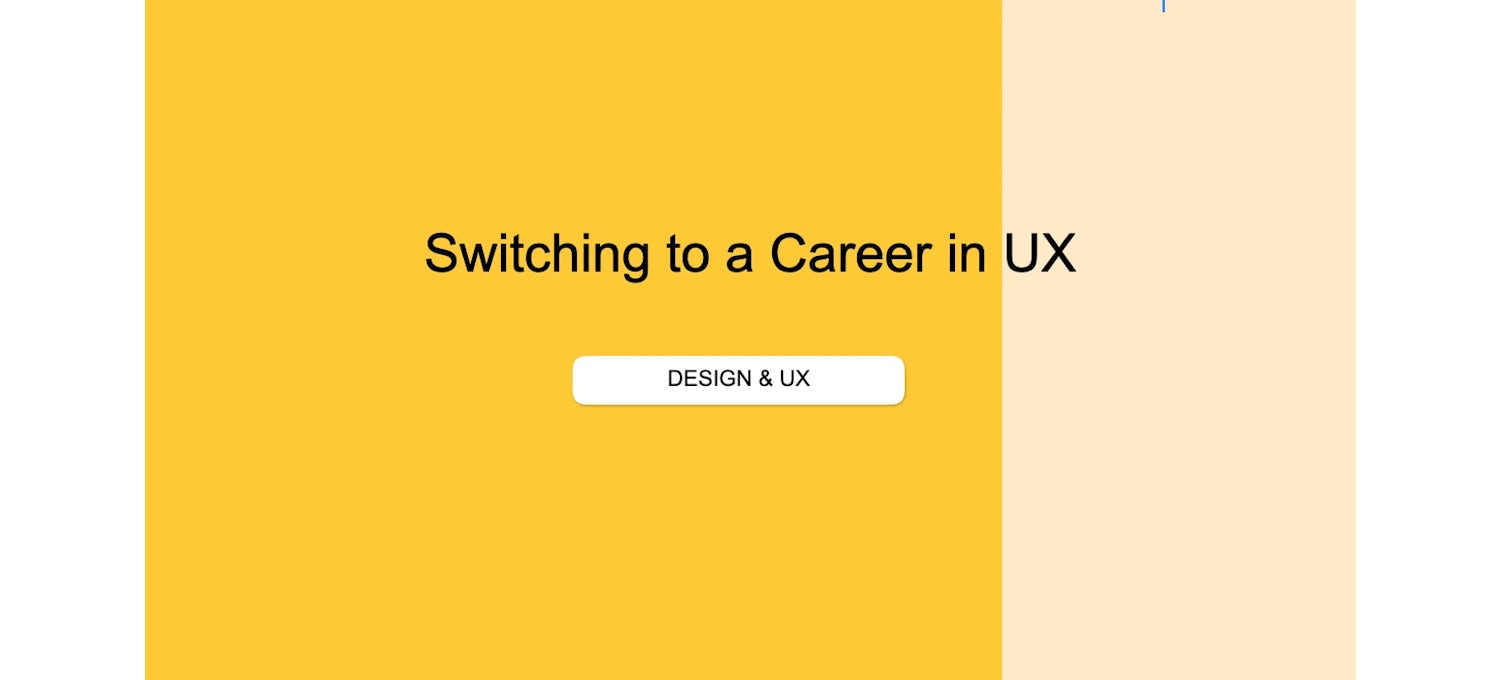How to Make a Career Change to UX Design
Unlock your user experience (UX) potential by understanding how your current skills can be applied in this user-centric field. Explore how various roles incorporate UX elements and discover practical steps to transition your career smoothly.

User experience (UX) design is a field that enhances user satisfaction through improved usability, accessibility, and enjoyable interactions between users and products. If you're passionate about crafting intuitive and impactful user experiences, transitioning into UX design could offer a fulfilling career. This guide outlines the necessary skills, appropriate backgrounds, and actionable steps for entering the world of UX design.
The Importance of User Experience Design
UX design is at product development's core, ensuring functional and delightful products. It suits those who are empathetic, detail-oriented, and interested in merging psychology with technology. With the increasing acknowledgment of user-centered design's importance across industries, the demand for skilled UX professionals is rising. UX designers are crucial in developing user-friendly digital products that meet the target audience's needs.
Read more: What Does a UX Designer Do?
Skills Needed for a UX Design Career Change
A career in UX design blends a variety of skills. Some examples of the essential skills and responsibilities you can expect to see in UX designer roles include:
Empathy: Deep understanding of user needs, thoughts, and emotions.
Wireframing and Prototyping: Proficiency in Sketch, Adobe XD, InVision, and Figma tools.
User Research: Skills in conducting and analyzing user tests and market research.
Interaction Design: Creating engaging and functional interfaces.
Visual Design: Strong foundation in layout, color theory, and typography.
Information Architecture: Structuring content and design logically for users.
Communication and Collaboration: Excelling in articulating design choices and working alongside team members such as developers and product managers.
![[Video thumbnail] How to Pivot Industries as a UX Designer](https://d3njjcbhbojbot.cloudfront.net/api/utilities/v1/imageproxy/https://images.ctfassets.net/wp1lcwdav1p1/HSdzfdZEBUUhkSMCIv19y/5025aa665ef959e43bc9cad8f93280a4/maxresdefault__14_.jpg?auto=format%2Ccompress&dpr=1&w=750&h=450&q=60)
Matching Your Skills to UX Design Roles
The job matrix below can help map your current skills to key UX design competencies so you can swiftly identify transferable strengths and learning gaps. Use the tool to strategically plan your transition, whether you're coming from business, engineering, or another field.
| User Experience Design Skill | Relevant Careers |
|---|---|
| Empathy & User Research | Psychologists, Customer Service Professionals |
| Visual Design & Prototyping | Graphic Designers |
| Interaction Design & Technical Communication | Software Developers |
| User Research & Communication | Marketers |
| Project Management & Collaboration | Project Managers |
Best UX Design Career Opportunities
The radar chart below visually represents how your skills align with essential UX design competencies across different career paths. Use this resource to easily identify your strengths and areas for growth as you transition into UX design.

Click to zoom
If you're already in one of the following careers, you likely have strong transferrable skills that position you well for a move into UX design Here are a few examples of roles with skills that are also valuable in UX design roles.
Graphic Design: Strong visual skills and familiarity with digital design tools crucial for UX visual components.
Psychology: Understanding human behavior is beneficial for developing user-centered designs.
Software Development: Insights into application-build processes inform UX solutions that are technically executable.
Marketing: Knowledge of consumer behavior aids in focusing on user research and empathetic design.
Project Management: Team coordination and project oversight skills translate well into managing UX projects.
Step-by-Step Guide to Changing Your Career to UX Design
With the right resources and steps, you can successfully transition your career into the exciting and creative world of UX design. If you're interested in making the switch, start here.
Educate Yourself: Enroll in foundational UX design courses online.
Build a Portfolio: Develop personal or freelance projects to document your design process from concept to prototype.
Master UX Tools: Gain proficiency in industry-standard tools like Sketch, Adobe XD, and Figma.
Network and Engage: Join UX design communities, attend workshops, and participate in design challenges.
Seek Mentorship: Connect with experienced UX Designers for guidance and feedback.
Pursue Internships: Start with roles that provide practical experience, such as UX Researcher or Junior Designer.
Stay Informed: Keep up with leading UX trends, tools, and practices by following industry experts and engaging with professional publications.
Transitioning into UX design requires a blend of creativity, empathy, and technical skills to improve user interactions with products. By developing these skills and strategically navigating your career path, you can effectively move into a role that merges technology with user-centric design, leading to rewarding and impactful outcomes.
Get started today with the Google UX Design Professional Certificate on Coursera, where you'll learn the design process, the basics of UX research, and how to build a portfolio of work.
FAQs About UX Careers
转行从事用户体验设计需要掌握新的技能,了解以用户为中心的设计原则。首先要学习入门课程,为用户体验设计打下坚实的基础,包括研究设计、原型设计和用户测试。建立一个包含实践项目的作品集并寻求指导,也能帮助你获得实践经验,自信地实现转型。
是的,没有传统学位也能成为用户体验设计师。许多成功的用户体验设计师都是通过在线课程、认证和自主学习建立起自己的职业生涯的。专注于技能发展、实践经验和创建一个强大的作品集,可以向潜在雇主展示你的专业知识,展示你为UX设计职位所做的准备。
没有用户体验设计经验就意味着要从基础做起。参加初级用户体验设计课程,这些课程涵盖用户研究、Wireframe 和可用性测试等基本主题。参与实际项目,寻求 Feedback,不断完善自己的技能。建立多样化的作品集和了解行业趋势也是开始 UX 设计职业生涯的关键步骤。
Coursera
Writer
Coursera is the global online learning platform that offers anyone, anywhere access to online course...
此内容仅供参考。建议学生多做研究,确保所追求的课程和其他证书符合他们的个人、专业和财务目标。
